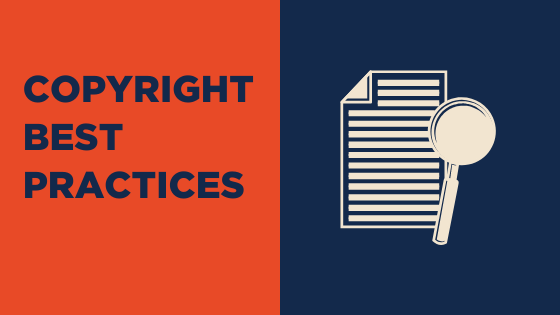
Copyright Best Practices
Note that the information offered on this page does not constitute legal advice. This page specifically addresses issues of copyright in online courses. For more thorough information on copyright, see the Copyright Reference Guide at the University Library.
US copyright law has an exception for face-to-face teaching that covers most uses of copyrighted material [17 U.S.C. §110(1)]. However, the law is still catching up to online and blended formats, and the current exception for online instruction [TEACH Act, 17 U.S.C. §110(2)] is much more complex and not currently in use at the University of Illinois. Depending on your use and the material, there are a number of different options for managing copyright in online courses.
Listen to a Copyright Specialist talk about Copyright, Public Domain, and Open Access in this video below:
Best Practices to avoid copyright infringement
- Link out. Linking to content is the simplest way to include copyrighted material in your course. However, content can be taken down and not all websites are accessible to students with disabilities, so this a better option for supplemental material.
- Practice fair use. Fair use is an exception in US copyright law [17 U.S.C. §107] that establishes the right to use copyrighted material without permission under some circumstances, especially when the cultural or social benefits of the use are significant. This includes purposes such as criticism, commentary, news reporting, teaching, and research. However, a teaching use is not necessarily fair use just because of the teaching nature. The law includes a four-factor test to decide fair use, which a judge will decide for or against in court (see the Resources section for information on how to evaluate fair use for online teaching).
- Consider using resources from the public domain, materials licensed under open access license like Creative Commons, and works not in copyright. Works by the federal government do not have copyright and can be used in any course format. The public domain also includes works that were voluntarily released without copyright by the authors, and works with expired copyright terms. (As of 2025, generally any works published before January 1, 1930, or 95 years prior to the current year. See Resources for information on term lengths.) Works with minimal creativity also do not have copyright. Copyright only protects expressions, while the underlying information of works such as facts, findings, formulas, concepts and procedures themselves are not copyrightable. Works licensed under open access license like Creative Commons are also available for use as long as simple conditions like providing citation are met. For more on Creative Commons, please see About CC Licenses.
